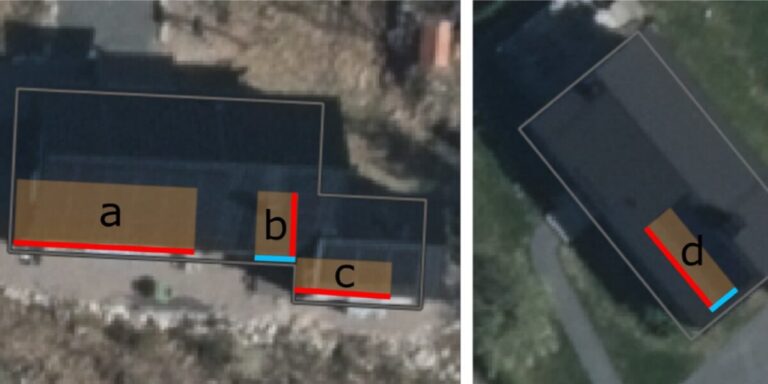Researchers in Sweden have developed a method to improve Lidar data to make more precise Tilt and Azimut modeling of solar PV and solar -thermal capacity at regional or substation level possible. The model can enable aggregators and grid operators to improve the planning of the net.
Swedish researchers from Uppsala University and Becquerel Sweden have developed a method to improve air image data generated by light detection and ranging (Lidar) systems to improve estimates of the installed capacity of Solar Energy System (SES). The Azimuth modeling is reportedly accurately accurately within 3 degrees for between 91% and 95% of the evaluated systems.
The researchers noted that Lidar -data is not necessarily sufficient to estimate the thermal capacity of solar PV and solar energy for power planning at regional or substation level. “Recent progress in identifying and segmenting SES, using air images, indicating a logical next step, improving the modeling of tilts and azimuths, because they significantly influence the power,” they said.
“It is usually assumed that the orientation is optimal, or similar to nearby systems with well -known tilt and Azimut. This is fine if the study of a larger area, but at a substation level, deviations from the real power output can be considerable,” said David Lingfors, corresponding author of the research, told PV -Magazine.
The researchers developed the model to be able to handle various special cases, such as cases where linear regression is not feasible; Or where there is insufficient number of Lidarpoints; Or systems and vertical systems mounted on the ground; or bidirectional PV cases on the roof; Or with an abnormally high tilt and bad regressional tricks.
To find the orientation, the polygons representing the SES in air images were orthorectifies to match Lidar data, followed by linear regression with Matlab’s RobustFit function.
The method was evaluated on the basic truth of the Azimut of 3,500 Swedish solar energy systems that were previously identified from aerial images with the help of Convolutional Neural Network (CNN) technology with a manually derived fundumental truth AZIMUTH.
The researchers discovered that the model was accurately estimated the Azimut in a margin of 3 degrees for 91% -95% of the systems. Moreover, it turned out that the distribution of Azimuths was narrower for thermal systems for solar energy than for PV systems. Moreover, a basic truth of the tilt for a subset of 39 systems gave an average absolute error of 3.6 °, the researchers noted.
“Surprisingly, we have discovered that the Azimut is often far from optimal. The distribution is flatter than expected by 10% of the panel area that is more to the north in our study, resulting in a low yield for northern widths. This shows that the often used assumption of optimal Azimut is misleading“Lingfors said.
In conclusion that the model can offer more accurate PV metadata, the researchers said the model of aggregators and grid operators could enable precise PV energy simulations and predictions to improve the operation and planning of the grid.
The work is described in “The orientation of existing solar energy systems distract from Lidar -data on scale‘Published by Solar energy.
When asked which investigation is coming, Johan Lindahl said, co-racking author, said PV Magazine, “In the pipeline, an article about the accuracy of a PV energy simulation method that used the orientation data to simulate the individual PV current generation of all distributed PV systems in an area with an hourly resolution.”
“Then we will present a study that the PV current generation of the electricity generation has quantified for low-voltage capacity and analyzed how much additional schedule capacity could be made available if grid operators would take the orientation flashing effects in the grid phase,” he added.
This content is protected by copyright and may not be reused. If you want to work with us and reuse part of our content, please contact: editors@pv-magazine.com.


